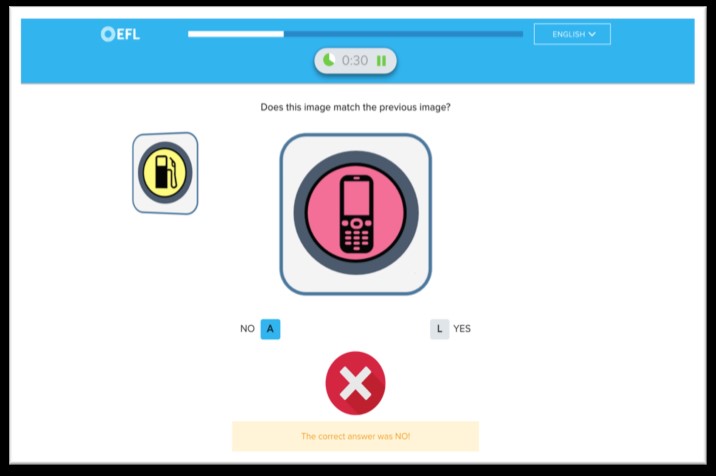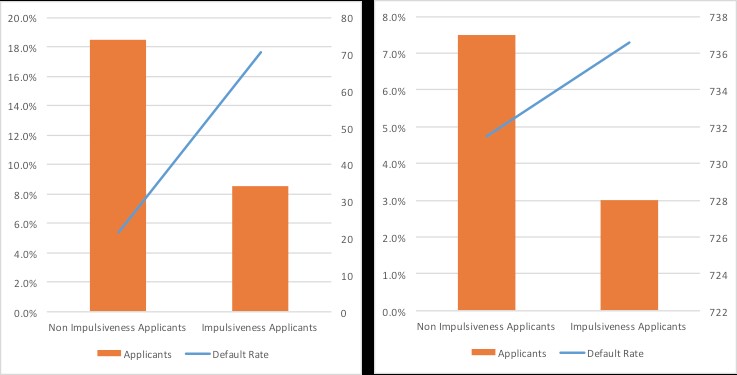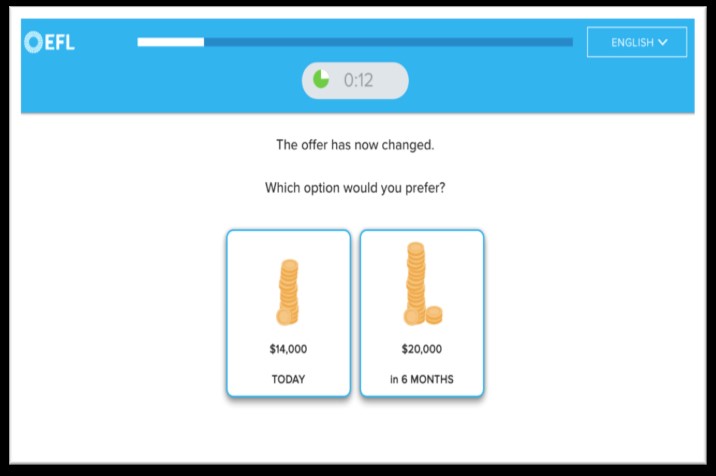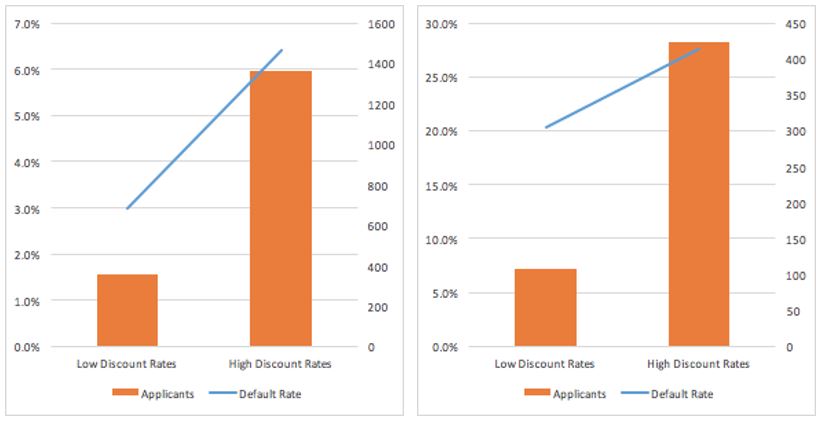Credit Scoring: Which Personality Traits Predict Credit Risk?
Blog: Enterprise Decision Management Blog

This is a guest post from Javier Frassetto, VP of Modeling and Data Science at FICO scoring partner EFL Global. EFL recently announced its merger with Lenddo. Our work with both EFL and Lenddo is part of the FICO Financial Inclusion Initiative.
Lenders rely on credit scoring to assess consumers’ risk, and credit scoring relies on credit data. But what if an applicant is new to credit?
EFL offers financial institutions a different way to assess creditworthiness and promote financial inclusion: by understanding personality. Everybody has a personality which can help us understand their risk profile, making the EFL assessment universal – we can score anyone.
To date, EFL has shared very little about the actual traits that drive our credit models. Today, we are sharing learnings about two traits that are central to risk assessment: impulsiveness and delayed gratification.
An Alternative to Credit Data
Over more than 10 years, EFL has developed a credit assessment using psychometric and behavioral science data that allows financial institutions to better understand applicants and make better credit decisions. The assessment is constantly evolving and improving. It started as a multiple-choice test taken with pen and paper and has become a gamified, digital assessment. The most recent version has a median completion time of 15 minutes and varies from 6 to 10 sections.
There are two main challenges we face in using alternative data for credit assessment:
- Predictive power: The data provided must be able to differentiate between good and bad borrowers.
- Assessment time: As time increases, applicants’ attention decreases and productivity decreases for financial institutions.
Because of these challenges, the design of the EFL assessment centers on three guiding principles:
- Maximum time limit – the assessment content has to be designed to have a maximum time associated with each exercise. This ensures a predictable timeframe for the assessment, easing the operational burden on financial institutions.
- Data-rich – each exercise has to capture multiple traits, relying heavily on metadata and interactions in order capture as much information in as little time as possible.
- Text light – content has to be designed with minimal text to ensure illiterate applicants are able to easily interact with the assessment.
The EFL assessment captures more than 25 personality traits. The most relevant are locus of control, fluid intelligence, impulsiveness, confidence, delayed gratification and conscientiousness. These traits let us identify applicants who are likely to repay their loans.
Let’s take a look at two examples.
Impulsiveness
Impulsiveness, the trait of acting on impulse without thinking, is measured in many exercises within the EFL assessment. One clear way to see impulsiveness within the assessment is the Speed Match Exercise. In this module borrowers play an interactive game that involves quickly clicking through a series of images and selecting whether or not the image matches the previous image. (Original module design inspired by Sternberg et al. (2013) and Morrison et al. (2015).)
 (This is just an example; in the real exercise the applicant only sees 1 image but not whether the choice was correct.)
(This is just an example; in the real exercise the applicant only sees 1 image but not whether the choice was correct.)
Applicants are instructed to evaluate 20 images in a specific time window. This generates an environment where the applicant needs to decide whether to move faster and make mistakes, or move slower without making errors but not complete all 20 images.
EFL data has shown that applicants who move faster with an impulse to finish the application and get wrong answers are more risky borrowers than those that take more time to answer with fewer errors. The figure below shows that impulsive applicants have higher default rates than other applicants. The relationship between the trait and default remains stable and the split between groups can be as high as three times. (Data comes from two different financial institutions in two countries where EFL has been deployed. The first chart is from a Latin-American country and the second one from an African country.)

Delayed Gratification
EFL measures delayed gratification, or the ability to delay something now in order to get something better in the future, through the financial trade-offs module. This module primarily estimates the customer’s temporal discount rate by measuring the amount of money she would be willing to forego to receive an immediate versus delayed payoff. Applicants demonstrate their financial preferences by making multiple selections between an immediate hypothetical reward and a larger delayed reward. (Module designed in partnership with Hal Hershfield (UCLA). Initial module design and estimate elicitations from Weber (2007), Weber et al (2013), and Meier and Sprenger (2010).)

Discount rates are measured in different rounds for different delays. Temporal discount rate (as measured in the module) has been found to be correlated to things like savings rates, (not) smoking, healthy diets, and other “future-self” oriented behaviors.
Data across different EFL deployments shows that applicants with higher discount rates are riskier than those with lower discount rates. Figure 2 shows how this exercise has been applied in two different populations. The first chart refers to an African population and the second one to a Latin-American population. Discount rates and default follow the same relationship and the split between groups can be as high as 2.1 times.

Opening the Door to Credit
Most of the time traits are not measured in just one exercise within the EFL credit assessment but in many across the assessment. These two examples show intuitively how different insights from an applicant can actually be used to predict credit risk.
EFL’s models generally rely on 10-12 specific traits. We found that some populations reveal more information about themselves than others, which means our credit models work differently for different segments; however, when financial institutions are able to assess enough applicants, a sound predictive model can definitely be built.
By assessing impulsiveness and delayed gratification, two universally available traits, we can improve financial inclusion and open the door to financing for millions of people around the world — people who may lack a credit history but certainly have a personality to score.
The post Credit Scoring: Which Personality Traits Predict Credit Risk? appeared first on FICO.
Leave a Comment
You must be logged in to post a comment.







